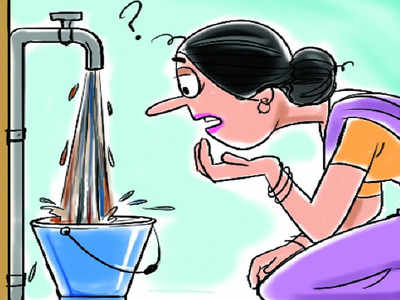Deccan Chronicle 06.01.2011
Silicon City circa 2050: Rich, hi-tech, and no water to drink?
January 6th, 2011
Jan. 5: Can the allocation of 911 tmc ft of water by the Krishna tribunal to the state help Bengaluru?
Former chairman, BWSSB, B. N. Thyagaraja, who heads an
expert committee to assess the water needs of the city for the next 40
years and look for alternate sources of water for it, says Bengaluru
can hope to get at least 10 to 12 tmc ft of water from the Krishna
river, but only as a last resort considering the distance and cost
involved.
“Also around 10 tmc ft of water which flows into the sea
from the Nethravathi and Kumaradhara rivers can be diverted to Hemavathi
and brought to Tumkur via Gorur dam and then to Tippagondanahalli,
giving the city around 4 to 5 tmc ft of water. There is also a proposal
to construct a hydro-electric plant at Mekedatu and supply 4 to 6 tmc ft
of the surplus water to Bengaluru,” he explains.
Bengaluru is clearly in need of more water as it has grown
in size with the addition of new BBMP areas and the BWSSB able to meet
the needs of hardly 40 to 45 per cent of the city. Although allocated 18
tmc ft of Cauvery water, Bengaluru is currently getting only 12 tmc
ft and will receive another 6 tmc ft or 500 MLD after the Cauvery fourth
stage, second phase is commissioned. But this is likely to happen only
by March 2012 and not by October 2011 as promised. And by then the
city’s population will have touched 8.02 million, leaving it still
short of 400 MLD. To make matters worse, its groundwater has fallen to
900 ft and the storage of the TG Halli is depleting. The fast
deteriorating situation prompted the BWSSB to form an expert committee
to look for alternate sources of water to meet the city’s needs up to
2050.
The committee, which has been considering various
alternatives like tapping water from the Krishna river, is keen on the
rejuvenation of the Arkavathy and Kumudwathi rivers, as this will bring
the city 25 MLD of water from the Hesargatta reservoir and 135 MLD from
TG Halli.
It is also looking at recycling sewage to the city’s
advantage. “The treated Vrishabhavathy valley water now reaches
Byrmangla reservoir. After tertiary treatment, it can be given to Mandya
and Maddur for irrigation and we can ask for more Cauvery water from
KRS,” says Mr Thyagaraja.
Yet another way would be for the city to recycle its
sewage and use it for non-potable purposes. Unfortunately, Bengaluru,
which generates 720 MLD of sewage per day treats only 300 to 350 MLD of
it. The BWSSB plans to set up 12 more STPs and introduce dual pipelines
in new BDA areas, to make sure all the sewage is treated in future.
Worried that 408 MLD of water is going ‘unaccounted for’
as a result of the 100 year old pipelines running through the city, its
many unauthorised connections, tampered meters and the misuse of public
taps, the BWSSB has begun replacing pipelines over the last three years
and plans to launch a scheme to reduce leaks in the system in Bengaluru
south.
The committee hopes that repairing the leaks and
increasing groundwater recharge through rain water harvesting, will
help the city cope with the crisis till additional water is found for
its use.

